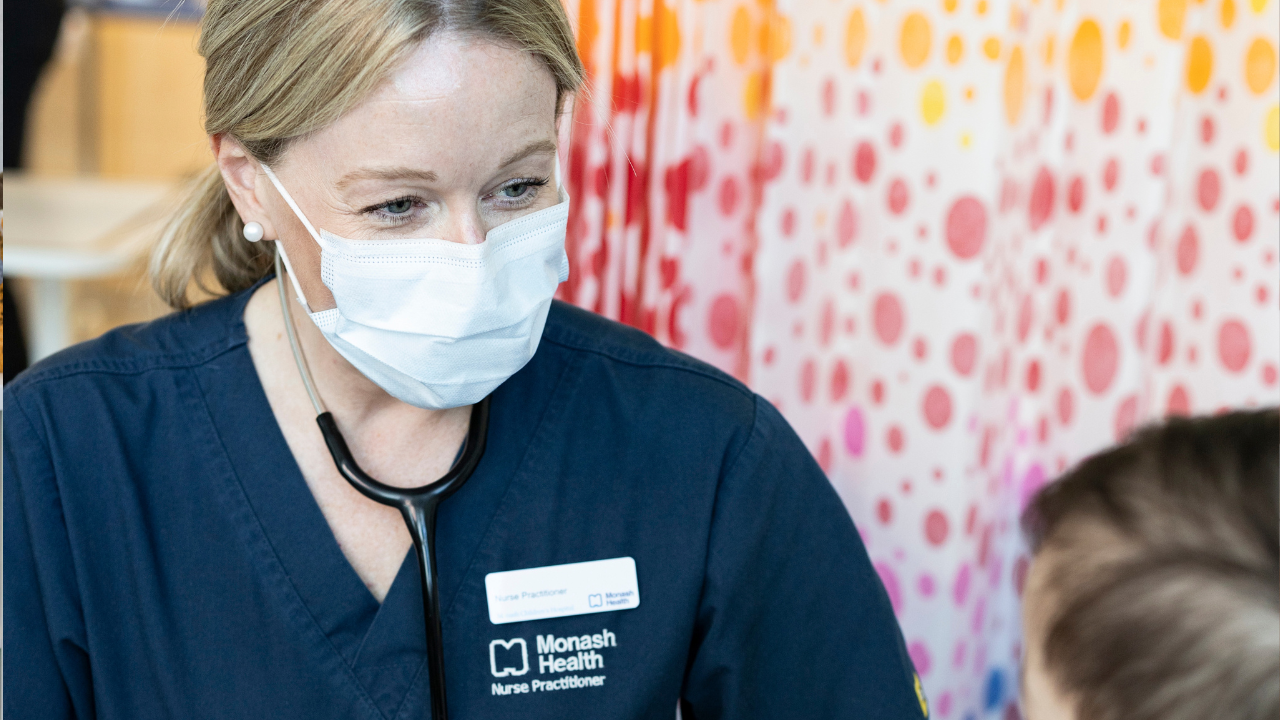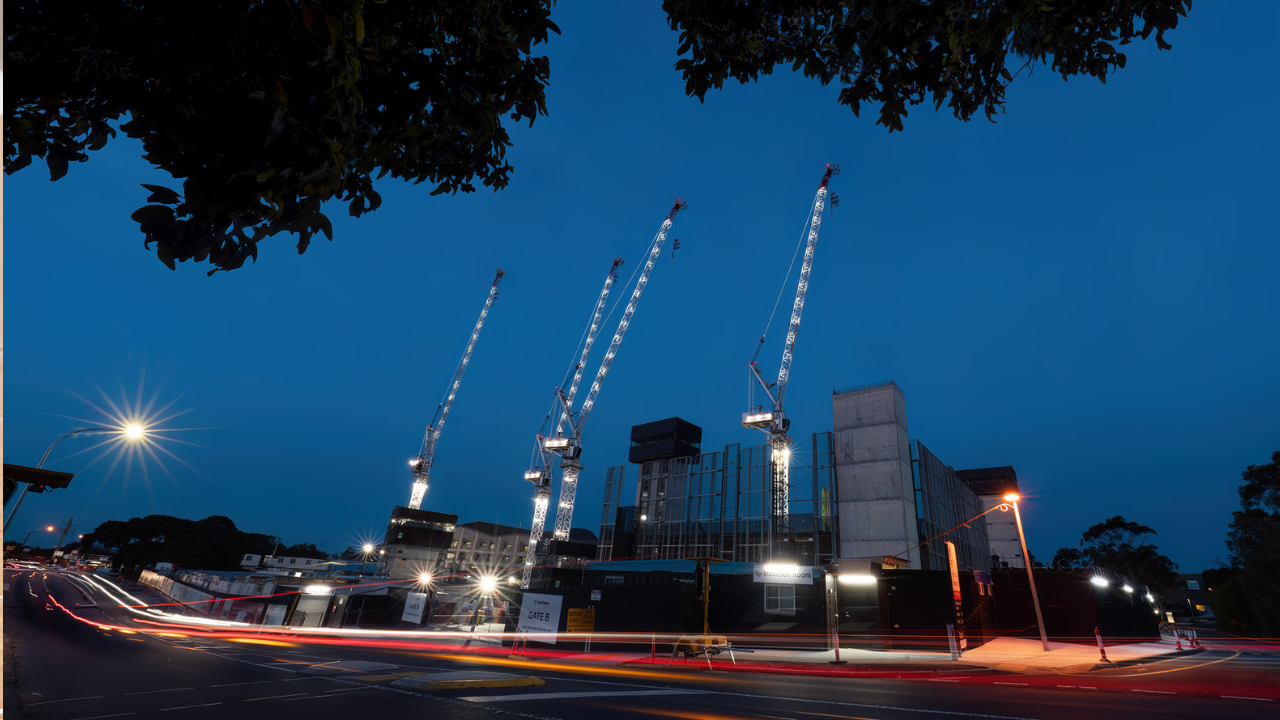
Since we came to government, Victoria’s public hospitals now employ over 5,000 more doctors, over 13,000 more nurses, and almost 8,000 more ancillary support workers than they did a decade ago.
And during the pandemic, when our health system was stretched like never before, we acted decisively – providing record funding to bolster our health system and keep our system running and Victorians safe.
Since the pandemic, the cost of running our health system has continued to increase – but every cent is worth it to provide quality care.
With this year’s Budget, we are making an unprecedented multi-year investment of more than $11 billion in our health system – providing the funding certainty hospitals need to plan for the future.
This will ensure hospitals can keep caring for patients as they continue to recover from the impacts and increased costs of the pandemic.
An additional $1.7 billion will continue to improve hospitals and health infrastructure, including upgrades at the Monash Medical Centre and the Northern and Austin Hospitals.
The biggest investment in frontline health services
This Budget makes a historic investment in our health system, providing long-term certainty for our hospitals.
This will enable hospitals to focus on what matters most – caring for their patients. Investments include:
- $8.8 billion to fund our hospitals over the long term, giving them certainty in planning their future budgets. This multi-year investment addresses structural changes to care as a result of the ongoing impact of the pandemic and associated staffing disruptions.
- $1.2 billion to address the reduction in Commonwealth funding for Victoria’s hospitals under the current National Health Reform Agreement.
- $755 million to open and operationalise new hospital facilities, including the Latrobe Regional Hospital’s expansion, and to continue to support additional beds and services established during the pandemic.
- $146 million to ensure Ambulance Victoria continues to meet the needs of our growing state. This will support secondary triage services, including our Priority Primary Care Centres and Medium Acuity Transport Service, which will free up ambulances to respond to the most time-critical patients.
- $126 million to continue to supply blood and blood products and blood services for Victorians who need it.
- $35 million to protect health services from cyber attacks.
- $28 million to support our healthcare workforce through programs including Registered Undergraduate Student of Nursing and Midwifery positions and other training and development initiatives.
- $18 million to support 12 women’s health organisations to provide preventative health services and community outreach.
Upgrading our hospitals
Our world-class doctors and nurses provide amazing care to Victorians, and they deserve world-class hospitals to match.
We are building new hospitals and better health facilities right across the state, with 62 projects underway. This Budget delivers $1.7 billion to continue the Victorian Government’s work.
Ensuring Victorians have the best care in every corner of our state, funding includes:
- $813 million to start construction at the Northern Hospital, including a new emergency department with a dedicated paediatrics zone, a mental health, alcohol and other drugs hub and additional inpatient beds.
- $535 million to expand the Monash Medical Centre, including expanded maternity care facilities, new operating suites and a new intensive care unit.
- $275 million to build a new emergency department for the Austin Hospital, expanding capacity and including a dedicated paediatrics zone.
- $118 million to upgrade infrastructure at The Alfred, ensuring it can continue to deliver the very best care to patients.
- $40 million to continue upgrading and replacing essential engineering infrastructure at hospitals across Victoria to improve safety and reliability.
- $36 million to establish a Community Health Hub in the City of Melbourne to address alcohol and drug-related harm.
- $35 million for new and upgraded medical equipment, supporting operating suites, emergency departments, surgical wards, intensive care units and neonatal and maternity services in hospitals across the state.
- $24 million to purchase and fit-out a quadra scanner in the Paula Fox Melanoma Cancer Centre, helping Victorians get a diagnosis sooner.
Helping new parents
Becoming a parent is both exciting and nerve-racking.
Thankfully, our trusted maternal and child health nurses are there for families when they need them most.
Since being introduced, our Baby Bundle has provided over 150,000 new parents and carers with all the essentials they need for their newborn child. We have also continued to provide public fertility care that gives more Victorians the chance to start a family.
This year’s Budget continues those investments, with $41 million for services that will make the first steps of parenthood easier:
- $29 million to support more families through those vital early years with our Universal, Enhanced and Aboriginal Maternal Child Health programs.
- $5.7 million to support mums in rural and regional areas, ensuring they have the care they need during pregnancy.
- $4 million to continue paediatric services through the Victorian Aboriginal Health Service, ensuring that Aboriginal children continue to be provided with culturally appropriate care.
- $2 million to continue the public egg and sperm bank, making it easier to start a family.
Better care for every Victorian
When it comes to giving Victorians access to the healthcare they need, we’re making sure no one is left behind.
This Budget continues to invest in vital health services for vulnerable Victorians, including:
- $47 million to support the health and independence of people with disability, including additional help for people with complex needs, support for people who are not eligible for the NDIS, specialised family support for parents and children with a disability, and additional autism assessment grants.
- $20 million for health services for high‑risk groups of Victorians who would otherwise miss out on care, including sexual health and HIV treatments.
- $11 million to improve young Aboriginal Victorians’ physical and mental health by reconnecting to their culture through the Culture and Kinship program.
- $4.4 million to provide medical care to refugees and asylum seekers who are not eligible for Medicare or other support programs, ensuring they get the care they need.
- $2.1 million to deliver access to trans and gender diverse health services and operate two multidisciplinary gender-affirming care clinics in Ballarat and Preston – supporting LGBTIQA+ Victorians.
Looking after Victorians in their later years
Every Victorian deserves to be looked after as they get older.
We have been proud to invest in the services and staff that ensure Victorians get respect and dignity in their final years.
This Budget continues that record, with $70 million for aged care and palliative services:
- $38 million will extend our state’s specialist palliative care services. This investment cares for Victorians at the end of their life, with support provided in our aged care facilities, hospitals, and most importantly, in patients’ homes. It includes $1.6 million to increase the number of people with cancer receiving early palliative care in our regional communities.
- $31 million will continue to support our public sector residential aged care facilities, ensuring patients with complex needs get the care they need where they live.
Continuing our investment in mental health
We promised Victorians we would build our mental health system from the ground up – and that is exactly what we’ve done.
Since 2018, we have invested more than $6 billion into Victoria’s mental health system – delivering on the recommendations of the Royal Commission into Victoria’s Mental Health System.
This represents the single largest investment in mental health by any state government in Australia.
This year’s Budget continues those important investments, delivering an additional $109 million, including:
- $31 million to treat Victorians with eating disorders, establishing a new in-home intensive early engagement and treatment program, 10 dedicated early intervention professionals in the communities that need them most, and an Eating Disorders Day Program in regional Victoria. Funding will also support bed-based treatment at Melbourne Health, Austin Health and Monash Health.
- $26 million to continue the delivery of statewide community mental health programs and reforms, suicide prevention initiatives, telehealth, and provide community-based support through Mental Health and Wellbeing Hubs.
- $21 million to open another 20 Youth Prevention and Recovery Care (YPARC) beds, and continue operations of the Mental Health Tribunal and psychiatry services, providing treatment, care and support.
- $16 million to deliver a new mental health graduate program in our Local Services, building the pipeline of trained professionals we need.
- $10 million for better mental health and alcohol and other drugs facilities across Victoria, responding to recommendations from the Royal Commission into Victoria’s Mental Health System.
- $5.4 million for a new mental health, alcohol and other drugs emergency department hub at the Ballarat Base Hospital. This will be integrated with the new emergency department being established as part of the existing hospital redevelopment.

Hospital Infrastructure Delivery Program
This year's Budget progresses our hospital infrastructure delivery program – setting out our forward plan of hospital construction.
We are staging delivery of our major hospital investments, helping to make sure we balance these builds with our broader infrastructure agenda.
With funding in this Budget, we are moving into delivery for the first tranche of major hospital upgrades:
| Delivery funding 2024/25 Budget | Total investment* | Practical completion |
Austin Hospital Emergency Department Upgrade
| $275 million | 2028 |
Monash Medical Centre Redevelopment
| $535 million | 2029 |
Northern Hospital Redevelopment
| $813 million | 2029 |
*Includes funding from the 2023/24 Budget
Through our $320 million Hospital Infrastructure Delivery Fund, announced in the 2023/24 Budget, we’re continuing planning work on:
- A new Queen Elizabeth II Hospital.
- Upgrading the Dandenong Hospital.
- Redeveloping the Wonthaggi Hospital.
- A new hospital for West Gippsland.
We’ve also continued our feasibility and technical work on the proposed Arden site of the Royal Melbourne Hospital and Royal Women’s Hospital, announced in 2022.
After intensive investigations, the Government has been advised that locating the full scope of the redevelopment at the Parkville site represents a better investment for Victorians.
As a result of this detailed technical investigation, the work required to mitigate electromagnetic interference for the hospital’s sensitive medical instruments would be significant – resulting in significant delays and costing significantly more.
This approach also enables us to make the most out of both sites: consolidating medical care and services in Parkville, and freeing up Arden for more homes for thousands of Victorians.
Reflecting the Government’s ambition to build more homes where Victorians want to live, Arden Precinct will be a thriving inner-city neighbourhood.
It also enables us to prioritise homes at Arden for health workers, as well as making homes more affordable and accessible through initiatives like build to rent.
Importantly, the completed project will deliver the same first-class care for patients – but sooner and with less disruption.
The Government is also continuing work on our Community Hospital builds.
Craigieburn, Cranbourne, Phillip Island and Sunbury will be completed this year, and the City of Whittlesea, Pakenham and Point Cook Community Hospitals will be completed in 2025 and 2026.
With the expansion of our primary care network, including Primary Priority Care Centres, and investments to increase capacity at Barwon Women’s and Children’s Hospital, the Royal Melbourne and Royal Women’s Hospitals and Northern Hospital – we’re now looking at how we best deliver services for the remaining communities.
Detailed service planning will examine the needs of the Emerald Hill, Eltham and Torquay communities in light of this additional care.
Updated

